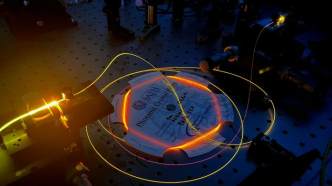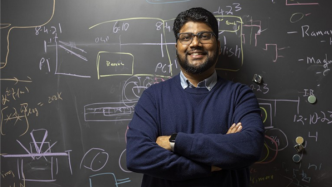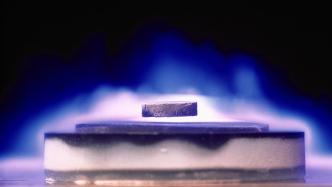
According to a report in the latest issue of Nature Communications, a new superconducting circuit design demonstrated by a team from the Massachusetts Institute of Technology is expected to increase the speed of quantum processors by 10 times. This is the strongest nonlinear light-matter coupling that has ever been achieved in a quantum system, which will make future quantum computers run faster and more stably, and take a step closer to practical application.
Quantum computers have great potential and will be able to quickly simulate new materials or greatly improve the learning efficiency of artificial intelligence in the future. However, the premise for the realization of these applications is that quantum computers can complete complex calculations at an extremely fast speed and read out the calculation results quickly. The efficiency of this measurement process, that is, the read efficiency, depends on the coupling strength between photons and artificial atoms (the material units commonly used to store information in quantum computers).
The superconducting circuit design used by the team this time has a nonlinear light-matter coupling strength that is an order of magnitude higher than previously demonstrated, taking a key step towards achieving quantum computing and reading that can be completed within a few nanoseconds.
In 2019, the team began developing a specialized photon detector to enhance quantum information processing capabilities. During this period, they invented a new type of quantum coupler called a "four-component coupler." This device is like a "translator" that can promote efficient information exchange between quantum bits. Its working principle is: when people inject current into the coupler, it can enhance the interaction between quantum bits and light signals, producing very strong nonlinear coupling. In short, it makes the "dialogue" between light and matter more efficient and accurate.
In the experiment, the team connected this coupler to two superconducting qubits on a chip, one of which was transformed into a resonator, equivalent to a reader, to detect the state of the qubit. The other was used as an artificial atom to store quantum information, where the information is transmitted in the form of photons. When microwave light is shone on this system, the resonator changes frequency depending on whether the qubit is "0" or "1". By monitoring this change, the researchers can determine the state of the bit.
As a result, the four-component coupler produces a nonlinear light-matter coupling strength between the qubit and the resonator that is an order of magnitude higher than previously achieved. This not only speeds up the readout, but also reduces errors, allowing the qubit to complete more calculations and error correction operations within its lifetime.
In the long run, this research could help scientists build fault-tolerant quantum computers, which is crucial for practical, large-scale quantum computing.
(Original title: "New design of superconducting circuit is expected to increase the speed of quantum processors")


